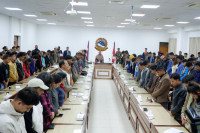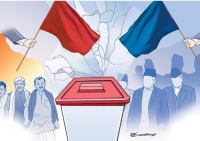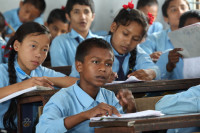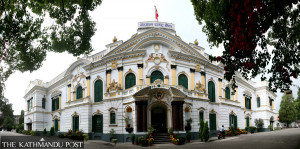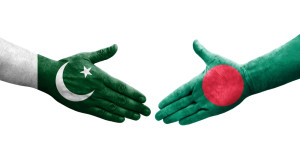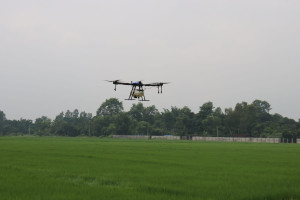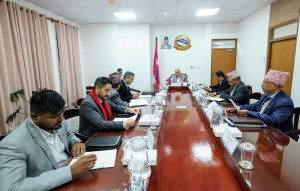Columns
The Balochistan crisis
Only a political redress of Baloch grievances would provide a durable solution.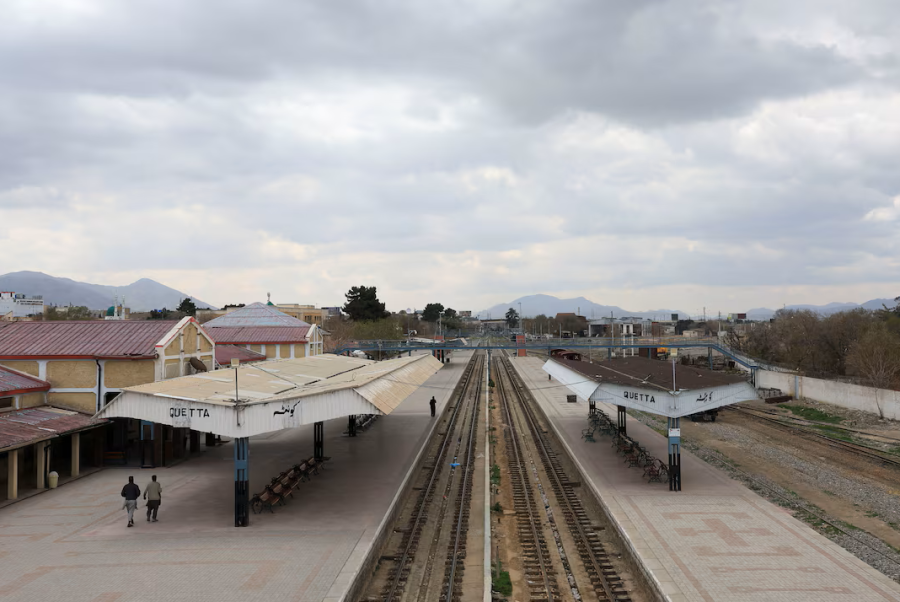
Smruti S Pattanaik
On March 11, the Baloch Liberation Army (BLA) hijacked the Jaffar Express, which runs on the 1600-kilometre railway line connecting Quetta to Peshawar. The attack happened in Balochistan, where a train carrying 440 passengers was ambushed. Passengers were taken hostage based on their identities—whether they belonged to the security forces deployed in Balochistan.
This was one of the bloodiest attacks in recent years. The BLA’s condition for the release of the hostages was the liberation of all the political prisoners belonging to the province. The railways in Balochistan have been frequently targeted as security personnel use trains to travel to Punjab and Khyber Pakhtunkhwa.
The attack on the Pakistani security forces, including Chinese workers, comes at a time when the state is grappling to come to terms with this renewed offence by Baloch militants. These instances contradict the claims by the Pakistani Army about being successful in putting down the Baloch insurgency.
Pakistan’s Minister of State for Interior, Tallal Chaudhry’s admission that “From Jan 1 to March 16, 1,141 people either lost their lives or sustained injuries in these attacks, adding that 1,127 such victims were from KP and Balochistan”, serves as proof of the faltering Army control. Military operations such as the Azm-e-Istehkam (Resolve for Stability), which have been ongoing since last year, have not been able to dent the BLA’s capacity to strike at will.
BLA leadership has transitioned from the dominance of Marri tribesmen to middle-class Baloch leaders, many of whom belong to the former Baloch Student Organisation, currently believed to be led by Bashir Zaib Baloch.
Attacks in Balochistan
Looking at the statistics of attacks and fatalities in Balochistan throughout the years, we can tell the insurgency surged from 2011 to 2016. The total number of terrorism-related incidents, which was 707 in 2011, rocketed to 945 in 2012 and reached a record high of 975 in 2013. The incidents stood at 651, 636 and 636 in 2014, 2015 and 2016, respectively. It is believed that the cases plateaued due to an increased vigil of security forces. The attacks have surged again since 2022.
The BLA appears to have gained momentum and has attracted cadres as the state’s apathy and its conviction of a military solution dominate the mindset in Pakistan.
Grievances remain
The insurgency in Balochistan took a turn to a phase of militancy in 2004 after the Pakistani Army, in an operation, killed Nawab Bugti, an influential Baloch leader. The Baloch grievances are both political and economic. They see the extraction of rich mineral resources benefitting the Punjabi elites while excluding the Baloch.
The jobs generated by the Gwadar Port development have also been usurped by the Punjabis and people from other provinces, leaving the Baloch people in a lurch. These development projects have entrenched colonial influences in Balochistan and have consolidated the Pakistan Armed Forces’ hold over the state.
Baloch insurgency has operated in phases, starting from the Kalat’s integration with Pakistan in 1948. Yet Islamabad has not been able to address the longstanding dissatisfaction and grievances of the Baloch people. It has tried to rule through some Baloch leaders. However, growing disillusion with the government has resulted in the younger generation taking over the movement’s leadership. Unlike in the past, they are not amenable to negotiations’ rather they are committed to an independent Balochistan. They consider the provincial government of Balochistan to be a puppet of Islamabad.
The Baloch people have been at the receiving end of an Army operation that has adopted a scorched-earth policy. The disappearance of young Balochs and a growing list of missing persons has only aggravated the militancy and justified them to carry on the struggle. It has drawn strength from popular disenchantment and Islamabad’s denial of forced disappearance.
The Baloch Yakjehti Committee (BYC or Baloch Unity Committee) leader, Dr Mahrang Baloch, and other women are taking the lead along with the Voice of Baloch Missing person in spite of accusations of being funded by external sources. Some women have also joined the militancy, including one named Shari Baloch from the Majeed Brigade of the BLA, who was the first suicide bomber to target the Chinese workers in Karachi.
Strengthening of the BLA
The BLA also has an intelligence unit known as Zirab, meaning ‘underwater’. Disillusioned with the old-style politics of Baloch nationalists, the BLA has attracted educated youths, cynical of the state and victimised by illegal arrests, torture and secret killing. The BLA continues to have a strong presence in Makran, Kalat, Quetta, Sibi and Nasirabad divisions of Balochistan. Factionalism within the group has not undermined its ability to conduct attacks.
The group is also social media savvy—not only countering the state’s views but also creating its own narrative and highlighting state exploitation in Balochistan. Increased militancy has prevented foreign investors from investing in gold and copper mining at Reko Diq Mining Company, halting revenue generation. The government has employed 700 personnel from the Frontier Corp to guard the mining site; a peaceful, business-friendly environment is lacking as violence is imminent. Authorities are having conversations with a Saudi Arabian mining company, Manara Minerals, to invest with the passivity of the company, which has a 20 percent stake in the mining. Meanwhile, a Canadian company, Barrick Gold, has a 50 percent stake in Reko Diq.
Blaming does not help
Pakistan’s constant blaming of India and Afghanistan has not helped the matter, as the insurgency is not new, and Pakistan has always had problems in Balochistan. In January this year, the BLA targeted military and security installations with guns and rockets in the city of Mach. In March last year, it attacked PNS Siddique air station in Turbat. It has also been targeting the Punjabi migrant workers engaged in various construction activities in Balochistan.
Prime Minister Shehbaz Sharif has termed the BLA as khawarij or ‘deviators from Islam’ and has sanctioned $72 million to Pakistan’s military to take on the Baloch insurgency. Many believe that the BLA has got hold of American weapons that are available in Afghanistan. Reportedly, the Baloch Liberation Front and the BLA have joined hands to fight against the Pakistani state. This effort aims to unite Baloch groups fighting separately but for a common cause under Baloch Raji Ajoi Sangar (BRAS).
Only a political solution to Baloch’s grievance would provide a durable solution. Blaming India and Afghanistan will not help the Pakistani state. The grievances of the Baloch are well-documented and historical. Pakistan needs to learn lessons from history.




 15.12°C Kathmandu
15.12°C Kathmandu
